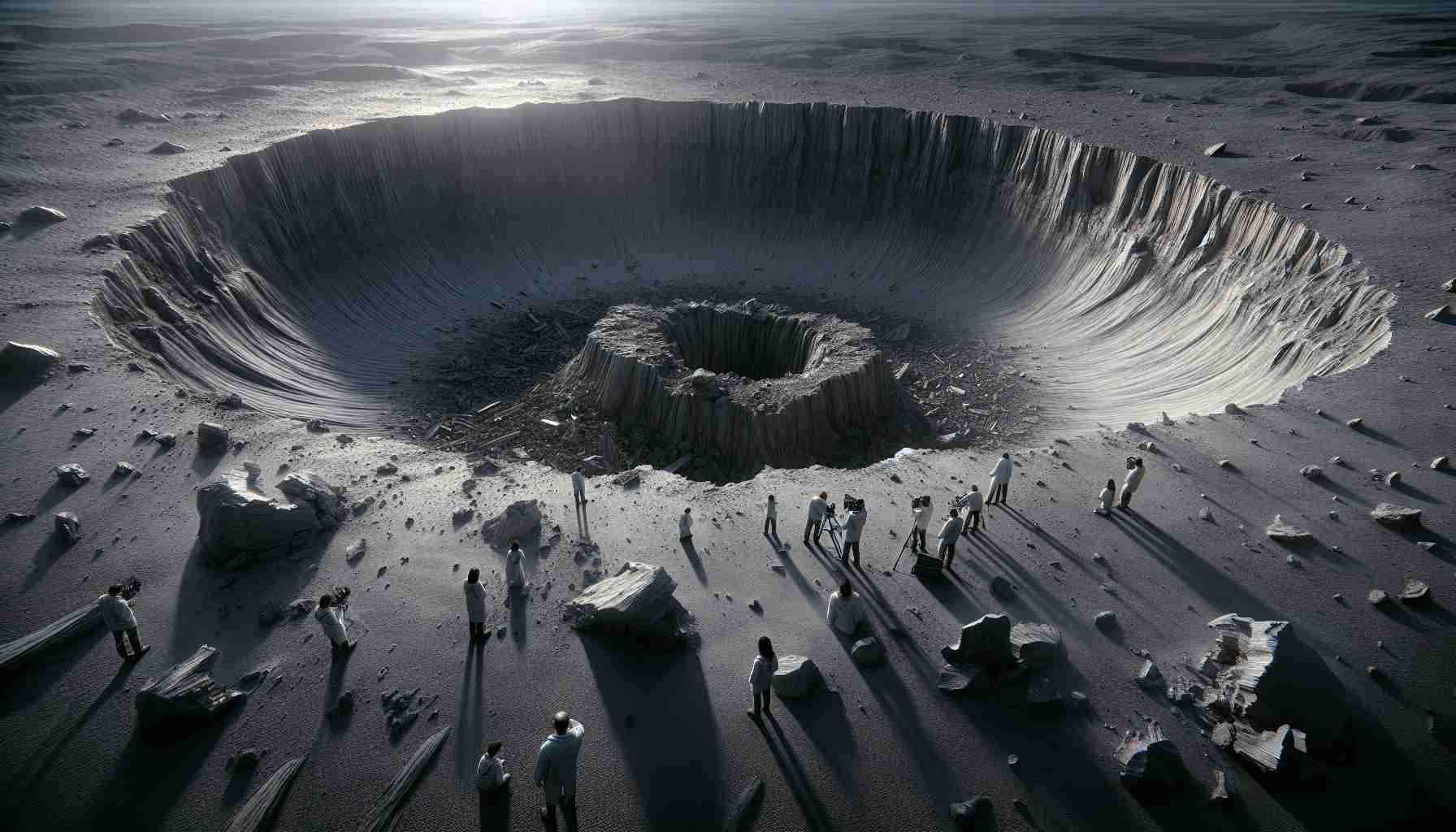
A Quebec resident recently uncovered a puzzling geological formation while exploring satellite imagery. Joël Laponite was preparing for an outdoor camping trip when he noticed a massive circular indentation spanning approximately 15 kilometers in diameter. This unusual feature is situated in the Côte-Nord area of Quebec, surrounded by an unusual configuration of mountains that encircle a nearby lake.
Intrigued by the peculiar sight, Laponite reached out to experts for insights. A team of geophysicists, led by Pierre Rochette, is currently examining this enigmatic pit as a potential meteorite impact site. Rochette indicated that the crater’s topography strongly suggests it was formed by a high-impact event.
Initial analyses of the site have revealed the presence of zircon. This mineral is often created under extreme conditions typical of impact events, leading scientists to believe this could be a significant discovery, with the last confirmed impact crater found in 2013.
Scientists from various institutions are now working diligently to gather more samples and data. Tara Hayden explained the importance of these findings, highlighting the connection that impact craters provide between Earth and the cosmos. Currently, there are over 200 known impact craters on Earth, with 31 of them located in Canada, indicating that many more discoveries await.
The use of modern technology, such as satellite imagery, may lead to more such findings in the future.
Mysterious Crater Sparks Scientific Investigation
Recent discoveries in Quebec have ignited curiosity and concern among the scientific community, leading to an in-depth investigation of a newly identified geological feature. This massive circular indentation, first spotted by resident Joël Laponite using satellite imagery, is approximately 15 kilometers in diameter and presents unique challenges and opportunities for researchers.
What are the implications of this discovery?
This crater could represent a previously unknown meteorite impact, potentially altering our understanding of geological events in the region and contributing to global knowledge about impact mechanics. The presence of minerals like zircon suggests extreme conditions akin to those created during significant impacts, making this site particularly valuable for research in planetary science.
What are the key questions surrounding the crater?
1. Is this crater indeed a result of a meteorite impact?
– Preliminary analyses, including mineral composition studies, indicate that it could be an impact site, but further investigations are required to confirm the event’s nature.
2. What is the age of the crater?
– Determining the crater’s age will help scientists understand the timeline of impact events in the area, with techniques like radiometric dating being employed for this purpose.
3. What are the ecological impacts of this crater?
– Analyzing the crater’s surroundings will reveal how such geological formations influence local ecology and what implications they pose for the area’s biodiversity.
Key Challenges
The investigation faces several challenges, including:
– Geological analysis complexity: The nature of impact craters can significantly vary, requiring advanced geological modeling and analysis to ascertain the mechanisms of formation.
– Funding and resources: Securing financial and logistical support for extensive field studies is crucial but can be competitive and challenging amidst other scientific priorities.
– Public interest and safety: As more people become interested in visiting the site, researchers must balance public curiosity with safety and ecological preservation.
Advantages and Disadvantages
Advantages:
– Broader scientific knowledge: Such discoveries enrich our understanding of Earth’s history and the dynamics of our solar system.
– Technological advancements: Modern techniques, including satellite imagery and geospatial analysis, enhance our ability to identify and investigate geological phenomena efficiently.
Disadvantages:
– Disruption of local environments: Increased traffic and human activity can disrupt local ecosystems and habitats, presenting ethical considerations for researchers and policymakers.
– Potential misinformation: The rise in public interest may lead to sensationalized claims or misinterpretations of the data, complicating scientific communication.
Conclusion
The investigation of this mysterious crater in Quebec not only holds the potential to uncover vital information about past geological events but also poses questions that extend to ecological and societal implications. As scientists continue their analyses, the collaboration between geological experts and local communities will be essential to ensure that both research and preservation efforts are effectively balanced.
For more information on related geological discoveries, visit Nature and ScienceDirect.



